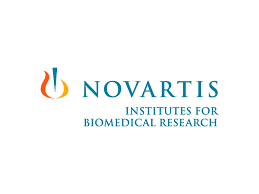Top 10 Trends in the Global Diabetes-Associated Ophthalmic Treatment Market: Leading Companies and Growth Insight
RELEASE DATE: Feb 2025 Author: Spherical Insights Request Free Sample
Introduction
The global diabetes-associated ophthalmic treatment market is witnessing significant growth due to the increasing prevalence of diabetes and related eye disorders. The demand for advanced therapeutic options continues to rise as healthcare providers focus on improving patient outcomes. Technological advancements, regulatory support, and emerging treatment modalities are shaping the market landscape. This article explores the top ten trends influencing the global diabetes-associated ophthalmic treatment market.
Global Diabetes-Associated Ophthalmic Treatment Market Size
"The Global Diabetes-Associated Ophthalmic Treatment Market Size is Expected to grow from USD 29.75 Billion in 2023 to USD 56.43 Billion by 2033, at a CAGR of 6.61 % during the forecast period 2023-2033."
Top 10 Trends in the Global Diabetes-Associated Ophthalmic Treatment Market
1. Rising Prevalence of Diabetic Retinopathy and Macular Edema
The growing incidence of diabetes has led to a surge in diabetic retinopathy (DR) and diabetic macular edema (DME) cases worldwide. These conditions remain the leading causes of vision impairment and blindness among diabetic patients. Healthcare organizations and governments are increasingly emphasizing early detection and timely intervention, driving the demand for ophthalmic treatments.
2. Advancements in Anti-VEGF Therapies
Anti-vascular endothelial growth factor (VEGF) therapies have become the standard of care for treating diabetic eye diseases. Innovations in anti-VEGF agents, including long-acting formulations and sustained-release delivery systems, are improving treatment efficacy and reducing the frequency of injections. Several pharmaceutical companies are investing in research to enhance the therapeutic outcomes of anti-VEGF therapies.
3. Expansion of Minimally Invasive Surgical Techniques
Minimally invasive procedures, such as micro-incision vitrectomy surgery (MIVS), are gaining traction in the ophthalmic treatment landscape. These techniques offer faster recovery times, reduced complications, and improved patient comfort. Surgeons are increasingly adopting innovative surgical approaches to manage advanced diabetic eye diseases more effectively.
4. Integration of Artificial Intelligence in Diagnosis and Treatment Planning
Artificial intelligence (AI) is transforming ophthalmic care by enabling early detection, accurate diagnosis, and personalized treatment planning. AI-driven retinal imaging and deep-learning algorithms assist clinicians in identifying disease progression, optimizing treatment strategies, and enhancing patient monitoring. The integration of AI in ophthalmology is expected to improve diagnostic accuracy and streamline clinical workflows.
5. Growing Adoption of Teleophthalmology Services
The expansion of telemedicine has facilitated remote eye screenings and consultations, particularly in underserved regions. Teleophthalmology enables early diagnosis of diabetic eye diseases through digital retinal imaging and real-time consultations with specialists. The widespread adoption of teleophthalmology is improving access to care and reducing the burden on healthcare facilities.
6. Regulatory Approvals and Pipeline Developments
Several pharmaceutical and biotechnology companies are investing in the development of novel ophthalmic drugs and devices. Regulatory approvals for new therapies and combination treatments are expanding the treatment landscape. The introduction of biosimilars, gene therapies, and regenerative medicine approaches further underscores the market's dynamic nature.
7. Increasing Focus on Patient Adherence and Compliance
Non-adherence to prescribed treatments remains a significant challenge in diabetes-associated ophthalmic care. Healthcare providers are implementing patient-centric strategies, including educational programs, mobile health applications, and digital reminders, to improve adherence rates. Innovations in drug delivery, such as sustained-release implants, are also contributing to enhanced patient compliance.
8. Advances in Retinal Drug Delivery Systems
The development of novel drug delivery systems, including intravitreal implants, biodegradable nanoparticles, and sustained-release formulations, is revolutionizing the treatment landscape. These advancements aim to reduce the treatment burden by minimizing the frequency of intravitreal injections while maintaining therapeutic efficacy. Researchers are exploring new biomaterials and delivery mechanisms to optimize drug release profiles.
9. Emphasis on Personalized and Precision Medicine
The shift towards personalized medicine is influencing treatment strategies for diabetes-associated ophthalmic conditions. Genetic profiling, biomarker identification, and predictive analytics are enabling tailored treatment approaches based on individual patient characteristics. Precision medicine is expected to enhance therapeutic outcomes and reduce adverse effects associated with conventional treatments.
10. Strategic Collaborations and Market Expansion Initiatives
Leading pharmaceutical companies, research institutions, and healthcare organizations are engaging in strategic collaborations to advance ophthalmic treatments. Partnerships focusing on drug development, AI-driven diagnostics, and innovative surgical technologies are driving market growth. Additionally, the expansion of ophthalmic care infrastructure in emerging economies is creating new opportunities for market players.
List of Key Companies
- F. Hoffmann-La Roche Ltd
- Johnson & Johnson Services, Inc.
- AbbVie Inc
- Novartis AG
- Quantel
- Pfizer, Inc.
- Ellex Medical Lasers Ltd.
- Bausch Health Companies Inc.
- Carl Zeiss Meditec
- Abbott Medical Optics
- Santen Pharmaceutical Co. Ltd.
- Genentech, Inc.
- Bayer AG
- Alcon
- Topcon Corp.
- IRIDEX Corp.
- Lumenis
- Others
Top 5 Companies Profile in Diabetes-Associated Ophthalmic Treatment Market
1. F. Hoffmann-La Roche Ltd

Headquartered: Basel, Switzerland
F. Hoffmann-La Roche Ltd is a global leader in pharmaceuticals and diagnostics. The company specializes in innovative healthcare solutions, including ophthalmic treatments for diabetic retinopathy and macular edema. Roche’s commitment to research and development has led to groundbreaking advancements in anti-VEGF therapies and personalized medicine. The company collaborates with healthcare providers and regulatory agencies to ensure the availability of advanced treatment options worldwide.
2. Johnson & Johnson Services, Inc.

Headquartered: New Brunswick, New Jersey, USA
Johnson & Johnson Services, Inc. is a diversified healthcare conglomerate with a strong presence in ophthalmology. The company develops cutting-edge medical devices, pharmaceuticals, and consumer health products. Johnson & Johnson’s vision care division focuses on innovative solutions for diabetic eye diseases, leveraging its expertise in drug delivery systems and surgical technologies. The company continues to expand its portfolio through strategic acquisitions and research investments.
3. AbbVie Inc.

Headquartered: North Chicago, Illinois, USA
AbbVie Inc. is a leading biopharmaceutical company specializing in innovative therapies for chronic diseases, including diabetes-related ophthalmic conditions. AbbVie’s acquisition of Allergan has strengthened its presence in ophthalmology, particularly in the development of anti-VEGF treatments. The company prioritizes precision medicine and personalized healthcare approaches to enhance patient outcomes in diabetic eye disease management.
4. Novartis AG

Headquartered: Basel, Switzerland
Novartis AG is a global healthcare company known for its strong portfolio of ophthalmic treatments. The company invests significantly in R&D to develop advanced therapies for diabetic retinopathy and macular edema. Novartis is a pioneer in biologics and targeted therapies, with a focus on improving drug delivery mechanisms and long-term treatment efficacy. Its strategic partnerships and global outreach continue to drive innovation in the ophthalmic sector.
5. Pfizer, Inc.

Headquartered: New York City, USA
Pfizer, Inc. is a multinational pharmaceutical company with a significant presence in the diabetes-associated ophthalmic treatment market. The company focuses on developing novel biologics, gene therapies, and combination treatments for retinal disorders. Pfizer’s strong commitment to innovation and strategic collaborations with research institutions ensure the continuous advancement of ophthalmic care solutions.
Conclusion
The global diabetes-associated ophthalmic treatment market is evolving rapidly, driven by technological innovations, regulatory advancements, and the growing demand for effective therapies. The integration of AI, minimally invasive procedures, and novel drug delivery systems are reshaping the treatment landscape. As healthcare systems continue to prioritize early diagnosis and patient-centered care, the market is poised for sustained growth. Industry stakeholders must remain agile and invest in research and development to address the unmet needs of diabetic eye disease patients worldwide.
About the Spherical Insights & Consulting
Spherical Insights & Consulting is a market research and consulting firm which provides actionable market research study, quantitative forecasting and trends analysis provides forward-looking insight especially designed for decision makers and aids ROI.
Which is catering to different industry such as financial sectors, industrial sectors, government organizations, universities, non-profits and corporations. The company's mission is to work with businesses to achieve business objectives and maintain strategic improvements.
CONTACT US:
For More Information on Your Target Market, Please Contact Us Below:
Phone: +1 303 800 4326 (the U.S.)
Phone: +91 90289 24100 (APAC)
Email: inquiry@sphericalinsights.com, sales@sphericalinsights.com
Contact Us: https://www.sphericalinsights.com/contact-us